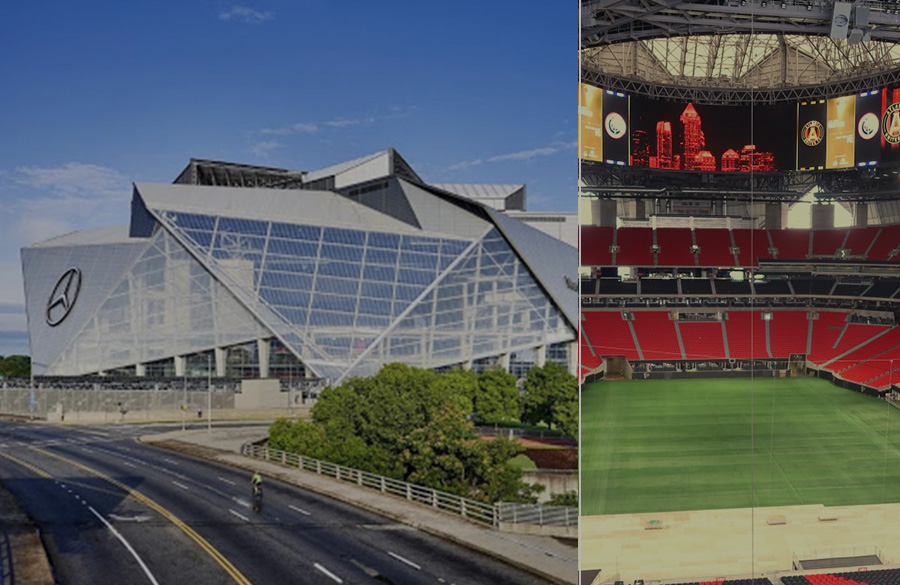Archaeologists also claim that there is a significant similarity of this temple with the Virupaksha Temple in Northern Karnataka. The Kailasa Temple is the 16th cave and is one of the 32 cave temples and monasteries of the awe-inspiring Ellora Caves.
The architecture throughout the ancient ages was associated with beautiful structures of grand proportions, rich in material, often delicate in design, and profound in the ornament. The architecture was not a mere building but a beautiful structure with its significance and grandeur. Let’s take a reading journey through one such structure and one of the world’s largest rock-cut temples from the past, the Kailasa Temple. With the resemblance to Mount Kailash, the puranic abode of Lord Shiva, Kailashnath Temple Ellora is believed that it was built by the Rashtrakuta King Krishna I between the years 756 and 773 AD. This rock cave temple is believed to be the largest monolithic structure in the world. It is situated about 30km away from the city of Aurangabad in the Maharashtra state of the Indian subcontinent.
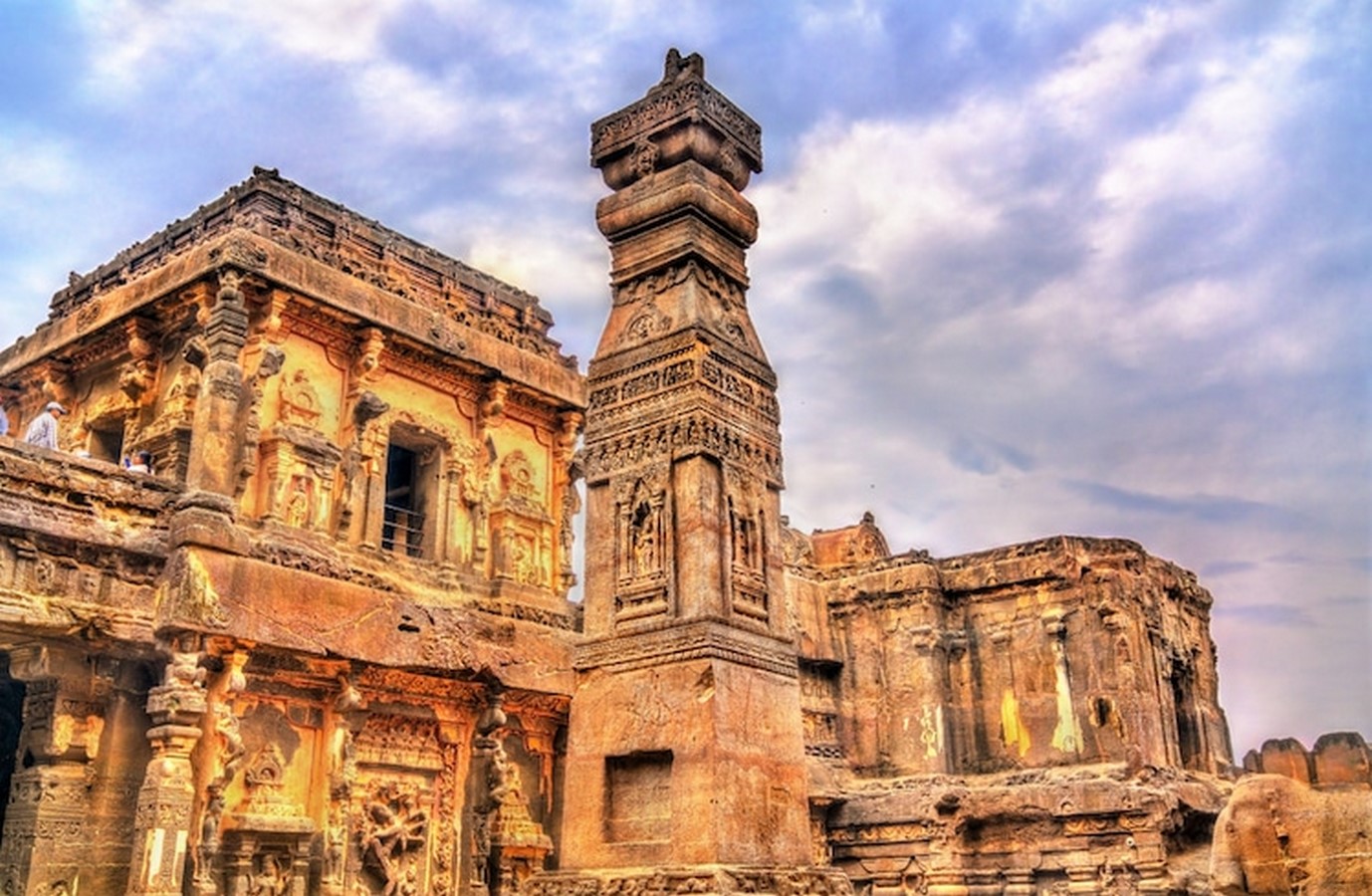
Design: The architecture of Kailasa Temple is remarkable, with its Gopuram: the monumental tower at the entrance leading to the horseshoe-shaped courtyard; Nandi Mandapa: the pavilion dedicated to Lord Shiva’s sacred bull Nandi; Gudh Mandapa: the closed sacred hall and Vimana containing the Garbhagriha: the shrine of Shiva.

The main shrine of the Kailasa Temple stands on a podium that is divided into two parts: the upper part Adhisthana and the lower part Upapitha, which is surrounded by a line of large sculpted elephants. Access to the upper floor is through the staircases provided on either side of the porch. A rock bridge connects the Nandi Mandapa to the porch of the temple.
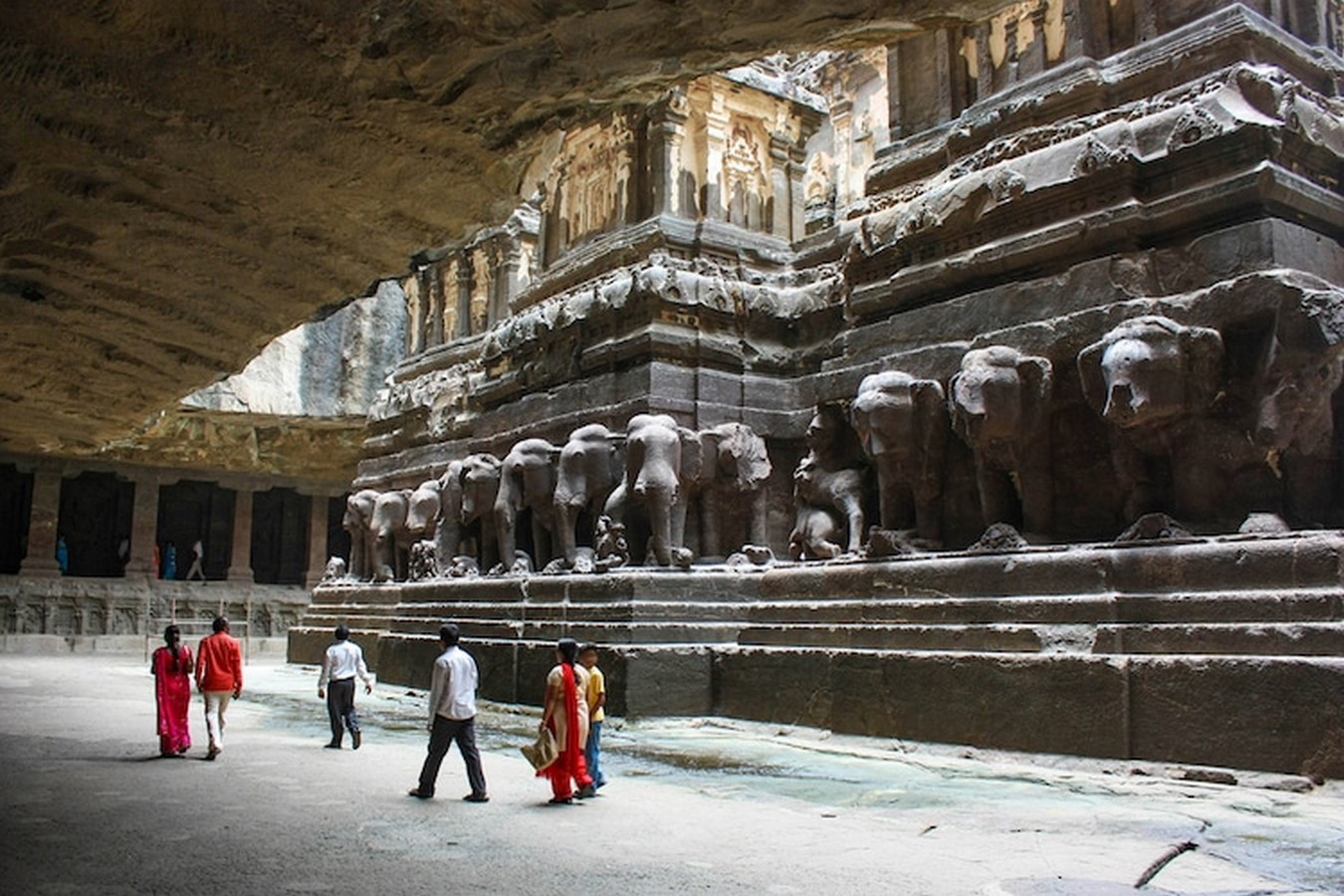
The beautifully sculpted walls of the Kailashnath Temple Ellora depict intricate stone-carved sculptures of various deities of the Hindu Mythology and these sculptures also depict some of the episodes from the Purana, Ramayana, and Mahabharata. These marvelous sculptures and the outstanding engineering of the Kailasa Temple make it an incredible example of Indian art, architecture, and culture.

However, in addition to the architectural and spiritual elements, there is, of course, the human element as well—the unknown eloquent faces behind these works of art and design. It is just jaw-dropping to imagine artists, craftsmen, and even monks, chiseling the rocks for decades, softening its edges, giving it shape and form, and leaving an indelible impression for posterity to figure out the past.

Construction: It is unbelievable that this 32-meter high monolithic structure has been carved out to T, from top to bottom. The number of labor involved in the construction of this majestic rock-carved temple is something that leaves one brooding about it.

The immense amount of cost and labor required to cut the ashlars from the quarry to build such a structure would have been unimaginable. The transportation of the ashlars to the site and then the site masons chiseling those to desired shapes and sizes is an ample amount of work during those days. In contrast to this, it was much more economical and easy in terms of labor and expenses to cut out a huge mass from a rock mountain and sculpt it into a colossal temple in situ. Moreover, it did not need the high technology of combining ashlars so tightly to be able to endure earthquakes. Hence, the temple is monolithic. Also in the case of ashlars masonry, in which the structure is built from bottom to top, the requirement of scaffolding is an additional cost that was ruled out in case of carving the rock mountain from top to bottom, hence making it cost-effective.
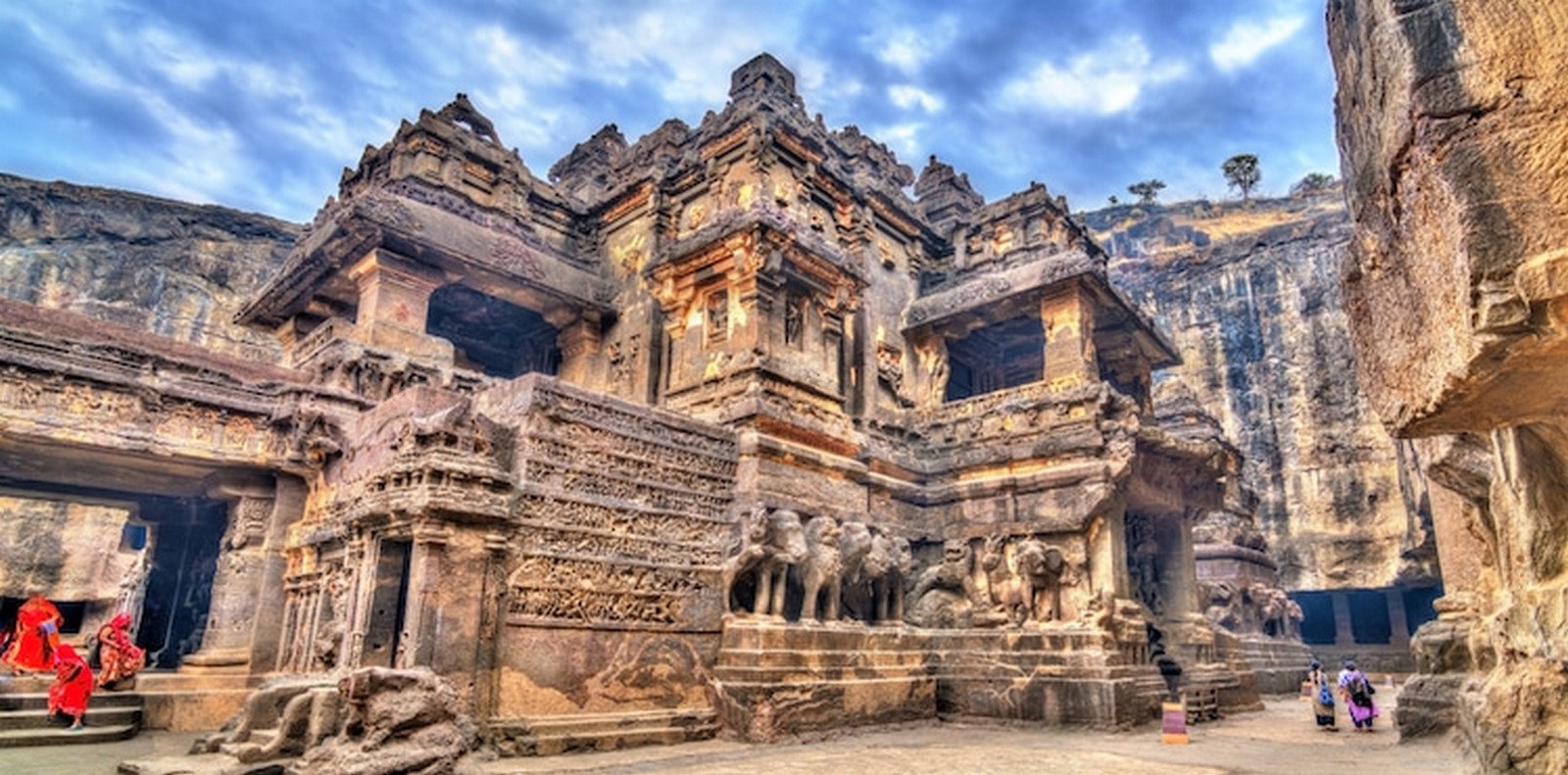
The construction period of this massive rock-cut temple is believed to be two and a half decades. Some archaeologists claim that during the construction of this temple, a total of 2,00,000 tonnes (Another estimation is found between 1,50,000 to 4,00,000 tonnes) of rock were excavated out of a vertical basalt cliff situated amidst the Charanandri Hills. It is also believed that the carving of this magnificent temple is done using simple tools like chisels and hammers.
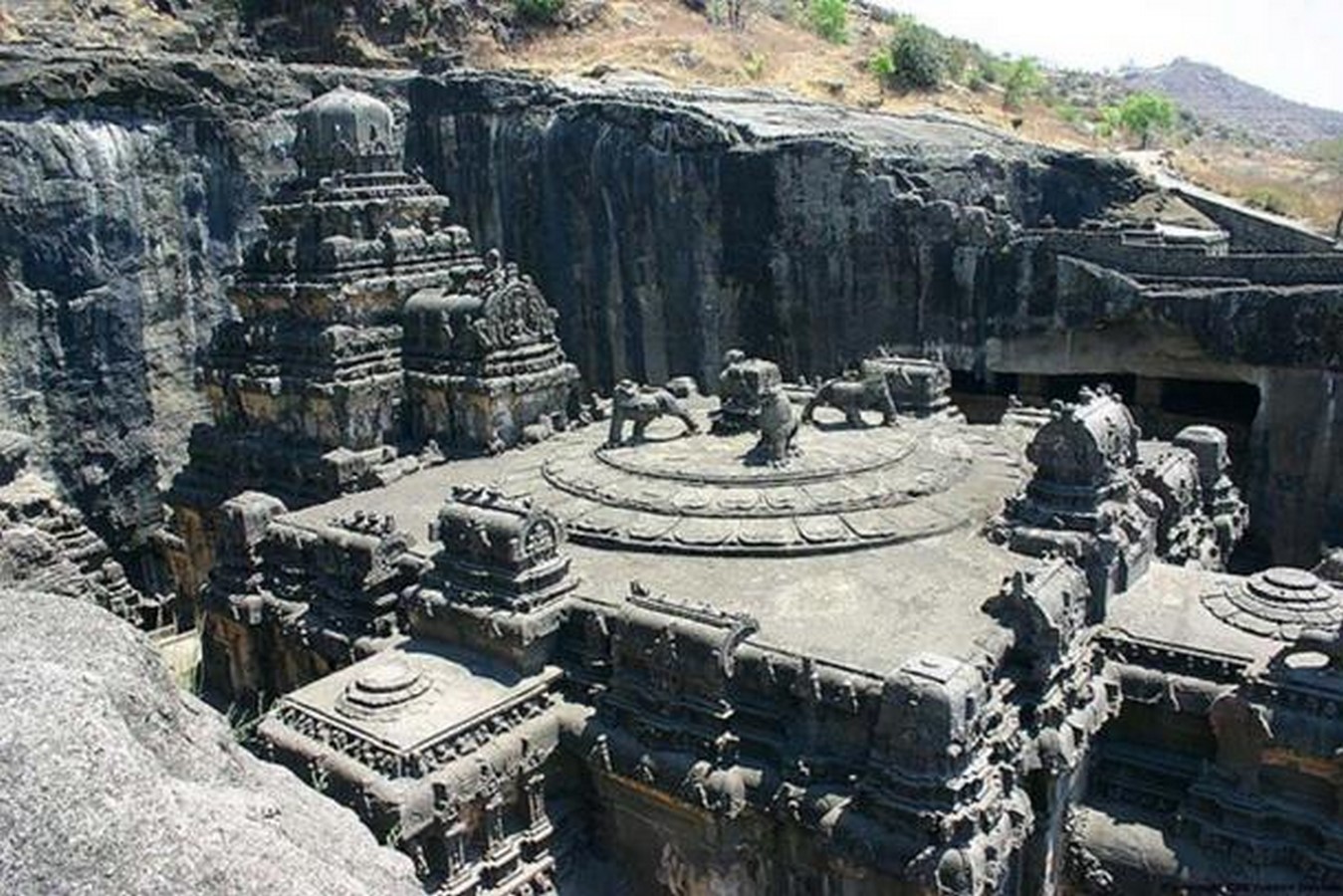
Sustainability: One of the biggest takeaways for our generation is the environmental concern raised these days, which has been beautifully taken care of during those times of rock-cut temples. Long before the ideas of sustainable living or green buildings came up, our ancestors who were part of the planning and design of this structure believed to live in harmony with the context and surroundings. This temple was carved out in such a manner that it blended in well with the contextual landscape of the area with little or no harm to it. Also, they worked with what they had “the rock” and ruled out the idea of building out of some foreign material unavailable in the region. Alas, in this era of modernism, we believe in bulldozing and blowing up our ways to become a developed nation.





